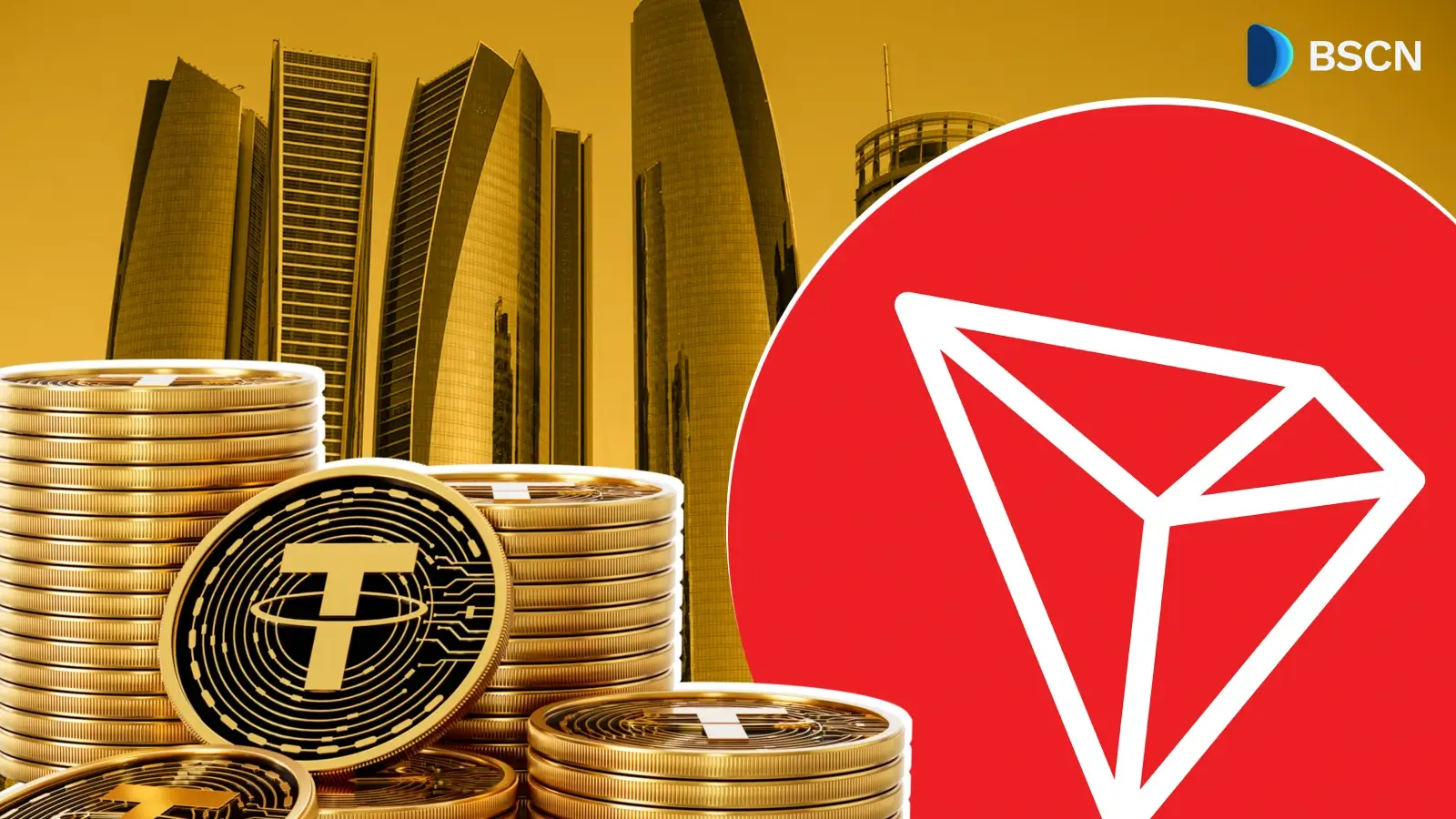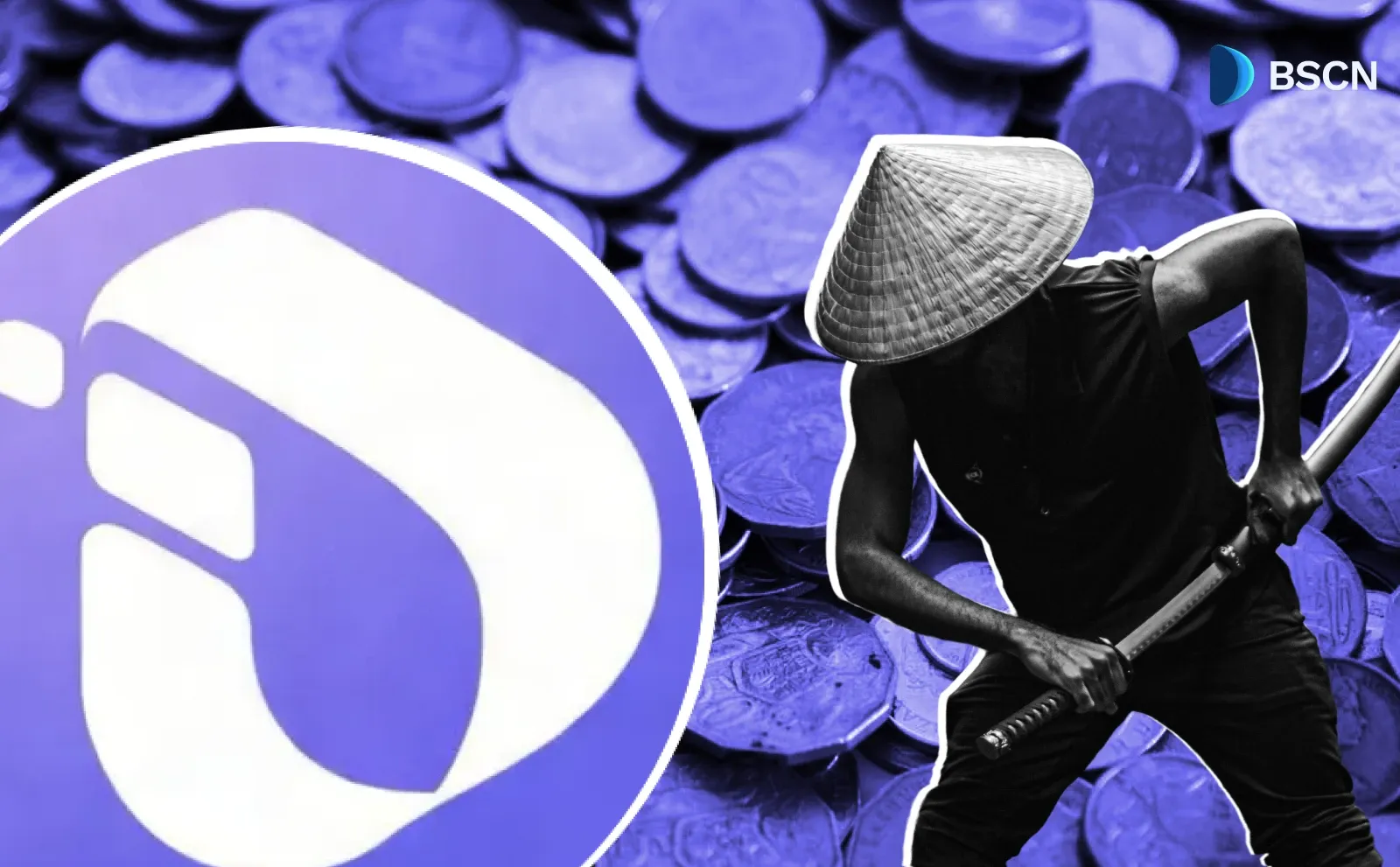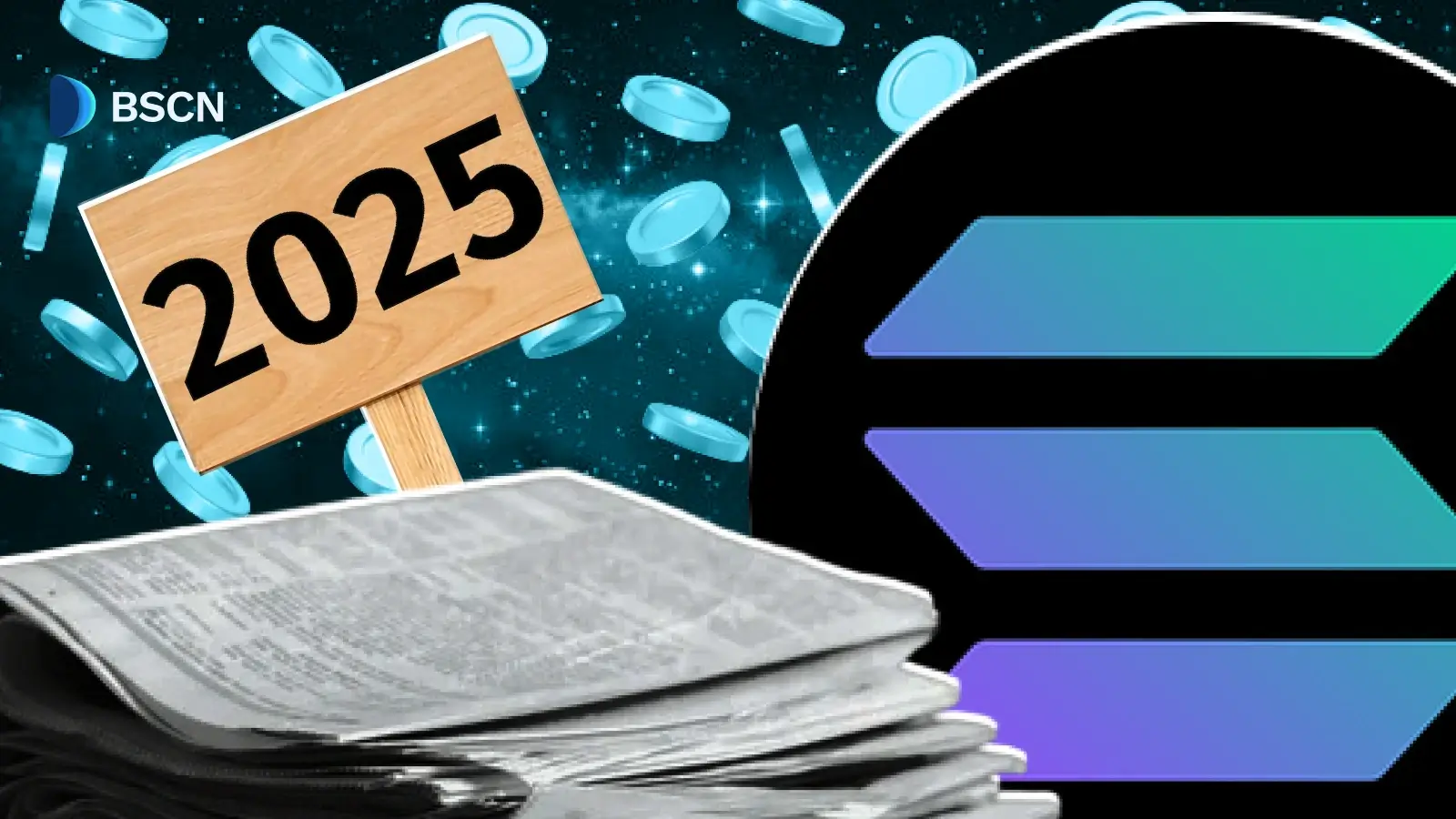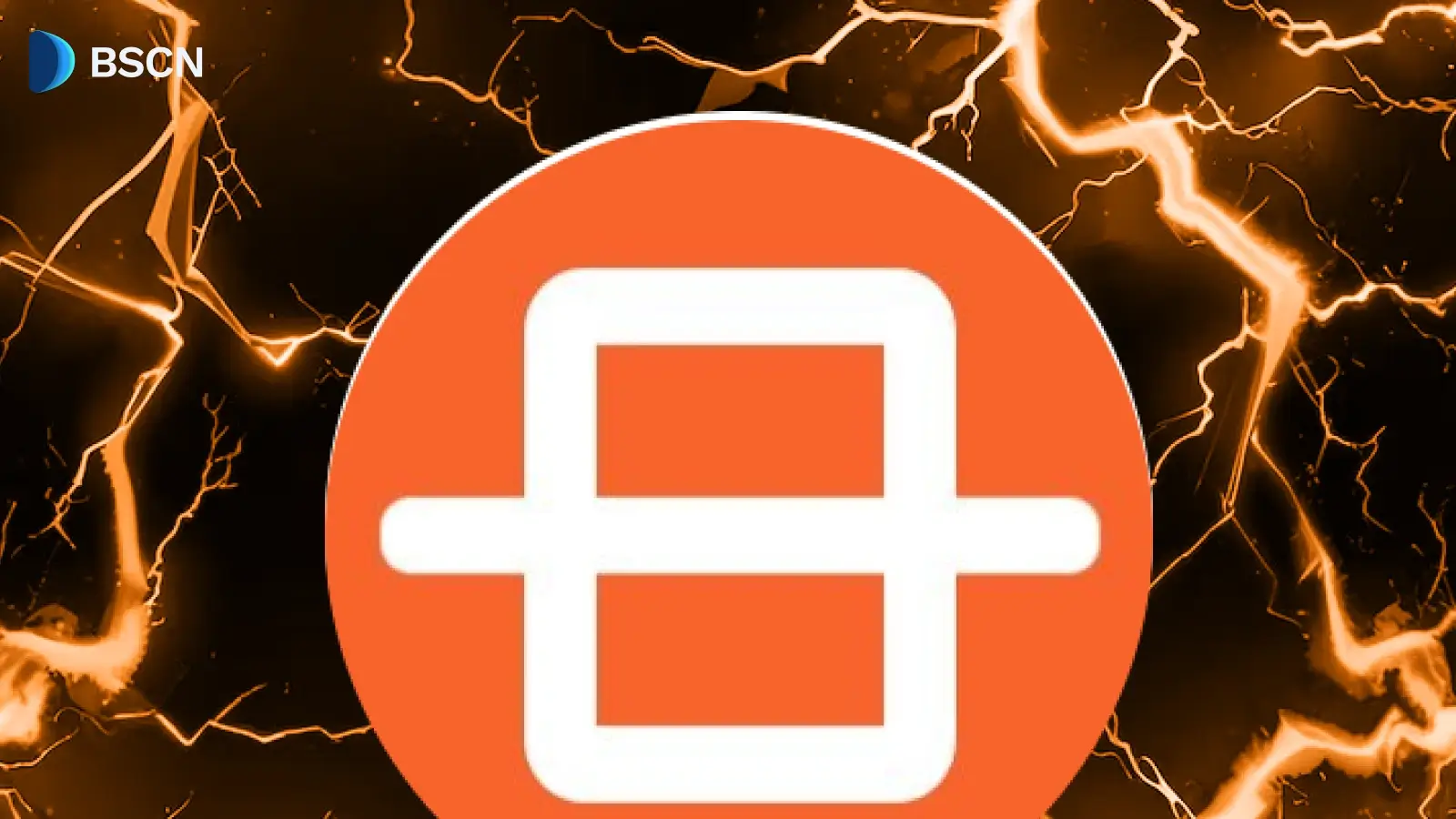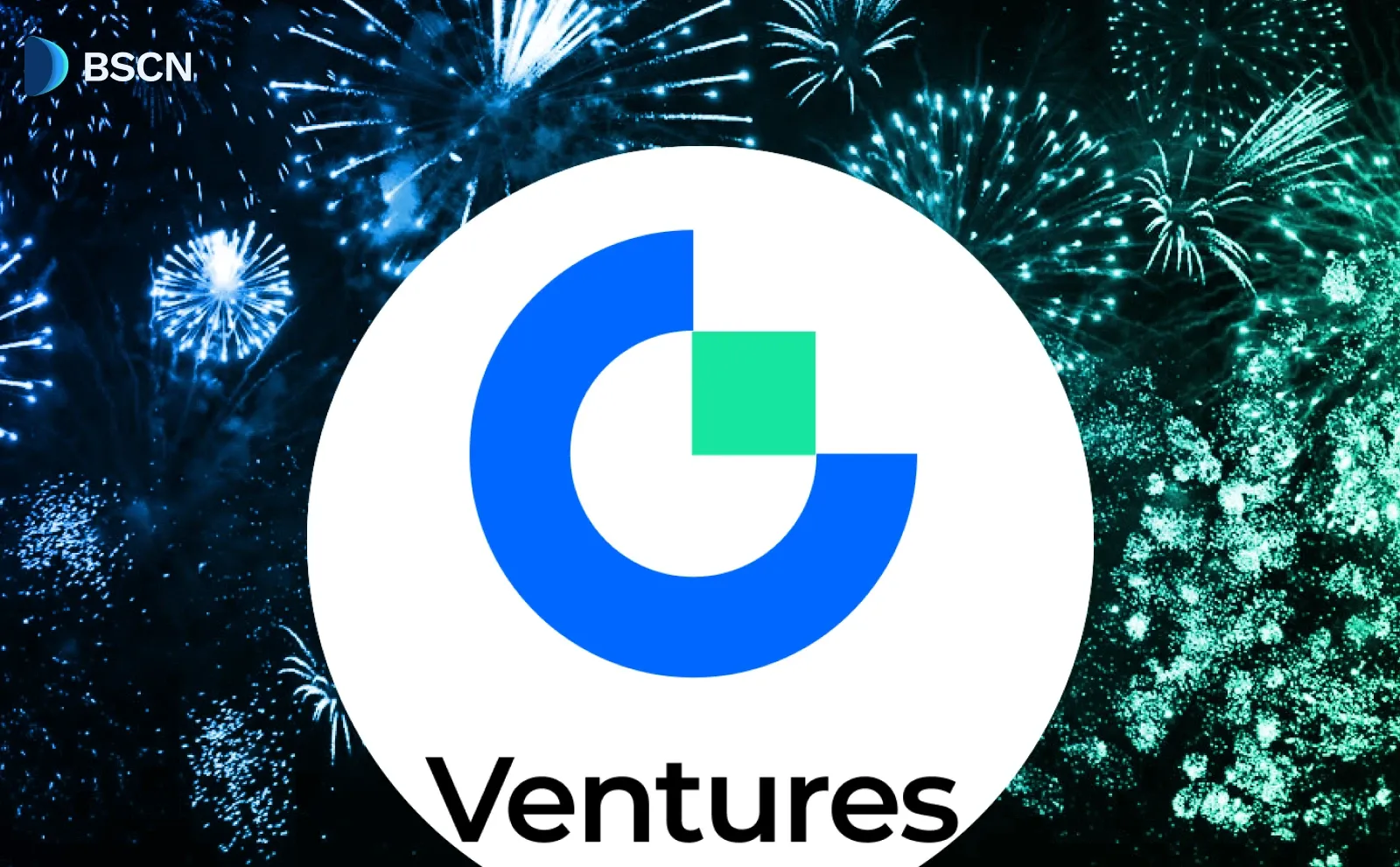Deepdive
(Advertisement)
Beam Deep Dive: Technical Analysis of the Gaming-First Blockchain

Technical analysis of Beam blockchain - the gaming-first Layer 1 network. Architecture, $BEAM token economics, SDK features, and ecosystem partnerships with Immutable and Polygon.
Crypto Rich
July 7, 2025
(Advertisement)
Table of Contents
The gaming industry generates over $180 billion annually, yet most games remain centralized, with players owning nothing. Beam addresses this gap through an independent Layer 1 blockchain designed specifically for interactive entertainment applications.
This gaming-focused network launched its permissionless mainnet on October 24, 2023, leveraging Avalanche's proven tech stack with Ethereum Virtual Machine compatibility. The ecosystem combines developer-friendly tools, cross-chain interoperability, and a community-driven governance model, facilitated by the $BEAM token.
Origins and Development Timeline
Beam's Foundation
Beam was established in 2021 by Merit Circle DAO, a decentralized autonomous organization focused on advancing blockchain gaming. Initially focused on play-to-earn gaming, offering scholarship programs that helped players access blockchain games, Merit Circle evolved into a comprehensive framework for Web3 gaming innovation.
The DAO recognized the need for a dedicated interactive entertainment infrastructure, which led to the conception of Beam as a specialized blockchain for the industry. This strategic evolution from scholarship programs to infrastructure development shows Merit Circle's adaptive approach to the rapidly changing Web3 landscape.
Decentralized Leadership Model
Unlike traditional blockchain projects with named founders, Beam operates under the decentralized governance of Merit Circle DAO, founded in 2021 by contributors including Marco van den Heuvel and Tommy Quite, who focus on advancing Web3 gaming. Beam itself has no individual founders; development is driven by the DAO's community of token holders and technical contributors.
This approach prioritizes community-driven development, where BEAM holders collectively shape the project's direction through governance proposals and voting. The core development team consists of contributors within the ecosystem, bringing expertise in blockchain technology, interactive entertainment systems, and decentralized finance.
Development Milestones
Beam's development follows a clear progression focused on gaming infrastructure:
- 2021: Merit Circle DAO establishment with initial focus on play-to-earn scholarships and community building.
- April 2023: Beam launches as a subnet on Avalanche, targeting developers with specialized tools.
- October 24, 2023: Mainnet becomes permissionless, establishing Beam as an independent L1 network.
- 2024: Collaboration with Immutable and Polygon expands ecosystem reach, with Sphere marketplace launch supporting over 200 games.
- 2025: Ongoing development of Beam Warp Layer 2 solution for enhanced scalability and performance.
Tokenomics and Utility
$BEAM Token Functions
At the heart of Beam's ecosystem sits the $BEAM token, serving multiple critical functions:
- Gas Token: All network transactions require $BEAM tokens, creating consistent demand and utility
- Governance Token: Token holders participate in DAO decision-making processes, driving community-led development and ecosystem evolution
- Validator Incentives: Network validators receive BEAM rewards for securing the blockchain and processing transactions
- Burning Mechanism: A deflationary model periodically burns $BEAM tokens, reducing the total supply over time and potentially increasing scarcity
This multi-utility approach creates a comprehensive token economy where $BEAM serves both functional and governance purposes.
Community Governance Structure
However, governance goes deeper than just token utility. The DAO's governance model allows BEAM holders to propose and vote on ecosystem changes. This decentralized approach makes sure community input shapes Beam's future development and strategic direction.
The organization's treasury, with over $186 million in assets according to official sources, provides financial stability for long-term growth and development initiatives, supporting the network's sustainability and expansion plans.

Technical Architecture and Infrastructure
Building on this foundation, Beam is an independent Layer 1 blockchain powered by Avalanche's proven tech stack. This foundation provides high transaction throughput and low latency essential for real-time interactive entertainment applications.
Layer 1 Blockchain Design
Beam's architecture includes several key components:
Proof-of-Stake Consensus: Beam initially used a Proof-of-Authority consensus during its developer preview phase but transitioned to a Proof-of-Stake mechanism with the Horizon upgrade, enabled by Avalanche's Etna upgrade. This transition ensures greater decentralization, efficiency, and allows token holders to validate transactions and secure the network.
EVM Compatibility: Full Ethereum Virtual Machine compatibility allows developers to use existing tools and smart contracts, reducing the learning curve for Web3 integration.
Permissionless Access: The network remains open to developers worldwide, enabling unrestricted game development and infrastructure building.
Beam Warp Layer 2 Solution
Taking scalability further, Beam Warp marks a significant advancement as an ultra-fast Layer 2 chain. This delegated Proof-of-Stake blockchain achieves approximately 1-second block times with immediate finality.
The L2 solution addresses high-volume transaction requirements through:
- Near-instant transaction confirmation
- Enhanced scalability for real-time applications
- Reduced transaction costs for frequent in-game interactions
- Maintained security through the underlying L1 network
Development Tools and SDK
For developers, the Beam Software Development Kit offers comprehensive tools for integrating blockchain technology into interactive entertainment applications. The SDK includes multiple components designed for seamless Web3 adoption.
- APIs for In-Game Assets: Developers can manage non-fungible tokens and other on-chain assets through simplified interfaces, enabling secure and transparent in-game economies
- Player Profiles: On-chain inventories store player assets and game progress securely, creating persistent player identities across games
- Transaction Management: The system supports sponsored, self-paid, and custom-charge transactions, offering flexibility for different game monetization models
- Beam Dashboard: A user-friendly interface allows developers to manage blockchain elements, including game assets and policies, without extensive blockchain knowledge
Gaming Applications and Use Cases
Web3 Game Development
With this technical foundation in place, Beam empowers developers to create immersive Web3 experiences through comprehensive blockchain integration tools. The framework enables developers to manage in-game assets, create secure trading systems, and implement player-owned economies.
For example, developers can create games where players own and trade NFTs representing rare in-game items, weapons, or characters. This ownership model enhances player engagement and creates new monetization opportunities for studios.
Decentralized Finance Integration
Additionally, Beam's ecosystem supports DeFi applications within interactive entertainment environments, enabling players to use $BEAM for in-game purchases, staking, or liquidity provision. The Beam Bridge, developed with LayerZero, facilitates seamless asset transfers across blockchains.
Players can utilize NFTs as collateral for loans or access VIP DeFi features, creating additional utility for digital assets beyond traditional gameplay.
Cross-Chain Interoperability
Furthermore, the Beam Bridge enables interoperability with multiple blockchains, including Ethereum, Polygon, and Immutable zkEVM. This cross-chain compatibility allows assets to move seamlessly between ecosystems, expanding Beam's reach and utility.
This interoperability proves crucial for applications that may need to interact with assets or services on other blockchains, providing flexibility for developers and players.
Infrastructure for Gaming Ecosystems
Beyond individual games, Beam provides comprehensive infrastructure for interactive entertainment projects, including decentralized exchanges and marketplaces. This infrastructure approach positions Beam as a foundation for building entire digital ecosystems rather than individual games, increasing its potential market reach and utility.
Strategic Partnerships and Ecosystem Development
Industry Partnerships
These technical capabilities have attracted significant industry partnerships. Beam's alliance with Immutable and Polygon marks a major expansion of its ecosystem reach. The collaboration focuses on creating Sphere, a native hub for Web3 games on Immutable zkEVM.
This joint venture supports numerous games, demonstrating Beam's scalability and versatility as an interactive entertainment framework. The collaboration leverages each partner's strengths to create a comprehensive infrastructure.
Developer Community
Meanwhile, Beam fosters innovation through events and hackathons. These initiatives encourage developers to build on the platform and showcase their skills, driving community engagement and creative applications. The ecosystem has attracted games including TrialXtreme, Walker World, and Domi Online, demonstrating real-world adoption.
Its developer-friendly approach, combined with comprehensive documentation and SDK support, attracts studios seeking to integrate blockchain technology into their projects. The community maintains an active presence across multiple platforms, including X, Telegram, and Discord, facilitating ongoing collaboration between developers, gamers, and contributors.
Technical Innovations and Differentiators
Simplified Integration
What sets Beam apart from traditional blockchains? Unlike networks that require extensive technical knowledge, Beam focuses on abstracting complex blockchain mechanics. The SDK and APIs allow developers to focus on creating engaging gameplay rather than navigating technical hurdles.
This approach reduces the barrier to entry for studios interested in Web3 integration, potentially accelerating adoption across the interactive entertainment industry.
Modular Architecture
Additionally, Beam's modular architecture enables dynamic scalability, with nodes playing crucial roles in maintaining performance and security. Node Token NFTs enhance network participation by offering utility and liquidity through platforms like NodeStore.
This design approach enables the network to adapt to changing demands and integrate new features without requiring fundamental architectural changes.
Community-Driven Governance
Perhaps most importantly, the community sits at the center of development. Token holders can propose and vote on changes, creating a truly decentralized ecosystem.
This community-driven approach distinguishes Beam from centralized platforms, ensuring that development priorities align with user needs and preferences.
Current Market Position and Adoption
So, where does Beam stand today? Its focus on interactive entertainment positions it within a rapidly growing sector of the blockchain industry. Beam's technical capabilities and developer-friendly tools address specific pain points in Web3 development, including complex blockchain integration and poor user experience.
The ecosystem's permissionless nature and comprehensive SDK have attracted developers seeking to build applications with blockchain integration, contributing to growth.
However, competition remains fierce. Beam competes with other specialized blockchains and general-purpose networks seeking adoption in interactive entertainment. Its differentiators include specialized tools, strong community governance, and strategic alliances with established Web3 companies.
Beam's technical foundation, utilizing Avalanche's proven technology stack, provides reliability and scalability advantages compared to newer or less established blockchain frameworks.
Future Development and Roadmap
Ecosystem Expansion
Looking ahead, what's next for Beam? The roadmap includes expanding its ecosystem through additional alliances with industry leaders and integration with more blockchains. Beam aims to become the primary choice for Web3 developers through continuous feature development and partnership expansion.
Future integrations with additional blockchains and entertainment platforms will further enhance Beam's interoperability and market reach, potentially attracting developers from different blockchain ecosystems.
Technical Roadmap
On the technical front, the development of Beam Warp shows the team's commitment to scalability. By achieving approximately 1-second block times, Beam aims to support high-volume, real-time applications that require near-instant transaction confirmation.
This scalability focus positions Beam as a leader in Web3 infrastructure, capable of supporting mainstream applications with millions of users.
Community Growth
Equally important, Beam's focus on community engagement drives its future growth strategy. By empowering token holders through governance and incentivizing developers through hackathons and SDK support, Beam aims to build a vibrant ecosystem where creators and users collaborate.
The community maintains an active presence across multiple platforms including X, Telegram, and Discord, facilitating ongoing collaboration between developers, gamers, and contributors. This community-driven approach makes sure development priorities align with user needs and market demands, potentially accelerating adoption and ecosystem growth.
Challenges and Market Considerations
Of course, challenges remain. Beam faces hurdles common to blockchain projects, including regulatory uncertainties in various jurisdictions. Its focus on interactive entertainment and modular architecture help to navigate these regulatory challenges by allowing adaptation to evolving compliance requirements.
The challenge lies in DeFi integration, which must navigate different regulatory environments.
Meanwhile, the blockchain sector includes established competitors and new entrants with significant resources. Beam's success depends on its ability to differentiate through superior technology, developer tools, and community engagement.
Beam's strong community, robust technical foundation, and strategic alliances position it well to compete in this dynamic market environment.
Finally, as applications grow in complexity and user base, Beam must continue scaling its infrastructure to meet demand. The Beam Warp L2 solution addresses current scalability needs, but future growth may require additional technical innovations.
Beam's modular design and continuous development approach provide flexibility for implementing new scalability solutions as needed.
Conclusion
Beam takes a focused approach to blockchain development for interactive entertainment, combining technical innovation with community governance and developer-friendly tools. Its Layer 1 architecture, powered by Avalanche's proven technology stack, provides the foundation for a comprehensive ecosystem.
The $BEAM token's multi-utility design creates a sustainable economic model that incentivizes network participation while enabling community governance. Strategic alliances with Immutable and Polygon expand the ecosystem's reach and demonstrate its capability to support large-scale applications.
But Beam isn't just code — it's a community of builders, gamers, and thinkers working to make digital ownership real. If Web3 gaming has a future, Beam is positioning itself to be its backbone. This community-driven development model, combined with substantial treasury resources and strategic alliances, positions Beam for possible sustained growth in the expanding Web3 market.
For more information, visit onbeam.com or follow @BuildOnBeam on X for the latest updates..
Sources
Read Next...
Frequently Asked Questions
What makes Beam different from other gaming blockchains?
Beam differentiates itself through its gaming-first architecture built on Avalanche's proven technology stack, offering EVM compatibility and specialized developer tools. Unlike general-purpose blockchains, Beam provides comprehensive SDKs specifically designed for interactive entertainment, including APIs for in-game assets, player profiles, and flexible transaction management. The network's modular design and Beam Warp Layer 2 solution deliver near-instant transaction confirmation with approximately 1-second block times.
How does the $BEAM token work and what is its utility?
The $BEAM token serves multiple critical functions within the ecosystem: it acts as the gas token for all network transactions, provides governance rights allowing holders to vote on ecosystem changes, incentivizes validators who secure the network, and features a deflationary burning mechanism that reduces total supply over time. This multi-utility approach creates consistent demand while enabling community-driven development through Merit Circle DAO's decentralized governance structure.
Can existing games integrate with Beam easily?
Yes, Beam's comprehensive Software Development Kit (SDK) simplifies blockchain integration for existing games and new projects. The SDK includes user-friendly APIs for managing NFTs and on-chain assets, on-chain player inventories, sponsored transaction options, and the Beam Dashboard for managing blockchain elements without extensive technical knowledge. Full EVM compatibility allows developers to use existing Ethereum tools and smart contracts, significantly reducing the learning curve.
Disclaimer
Disclaimer: The views expressed in this article do not necessarily represent the views of BSCN. The information provided in this article is for educational and entertainment purposes only and should not be construed as investment advice, or advice of any kind. BSCN assumes no responsibility for any investment decisions made based on the information provided in this article. If you believe that the article should be amended, please reach out to the BSCN team by emailing [email protected].
Author
 Crypto Rich
Crypto RichRich has been researching cryptocurrency and blockchain technology for eight years and has served as a senior analyst at BSCN since its founding in 2020. He focuses on fundamental analysis of early-stage crypto projects and tokens and has published in-depth research reports on over 200 emerging protocols. Rich also writes about broader technology and scientific trends and maintains active involvement in the crypto community through X/Twitter Spaces, and leading industry events.
(Advertisement)
Latest News
(Advertisement)
Crypto Project & Token Reviews
Project & Token Reviews
Comprehensive reviews of crypto's most interesting projects and assets
Learn about the hottest projects & tokens






